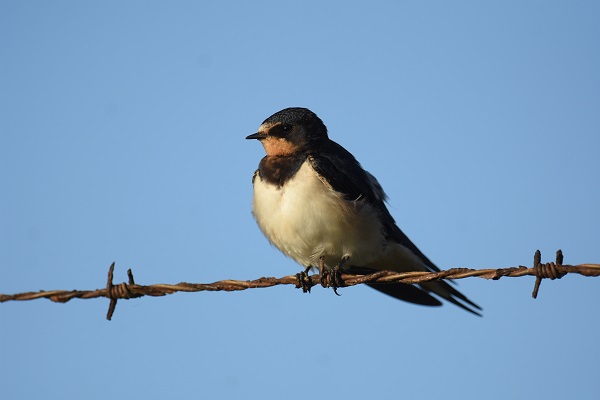 Credit: © Raymond Gloden
Credit: © Raymond Gloden
In the fourth in a series of articles about current conservation issues, experts at natur&ëmwelt, a leading nature conservation NGO in Luxembourg, spoke to Chronicle.lu about the role and the decline of swallows and hirundines.
Natur&ëmwelt volunteer David Crowther helped gather the relevant information from the NGO for this article.
Chronicle.lu: "One swallow does not a summer make" - was that Shakespeare? And was he right?
Natur&ëmwelt: Long before Shakespeare. Aristotle, in fact. And yes, very accurately observed. Swallows tend to turn up in dribs and drabs before the main flock makes its appearance.
Chronicle.lu: Where have they come from?
Natur&ëmwelt: Sub-Saharan Africa, which is a long, long way away. They won't exactly have hot-footed it from there though. Most migrations tend to be meandering affairs. Swallows can take weeks to reach their final wintering grounds in Africa and take just as long to make their way back. If they're happy somewhere en route, they'll stay there for as long as it suits them.
Chronicle.lu: What does it take to make a swallow happy?
Natur&ëmwelt: Flying insects, lots of them. And plenty of daylight hours to catch them in. That's the attraction of coming all the way to Europe to breed: the super-abundance of flying insects and the long summer daylight hours. But there's a hitch… Swallow numbers are plummeting. For one thing, there aren't anything like as many flying insects as there used to be; for another, the nesting opportunities are getting scarce.
Chronicle.lu: Let’s take these one by one: the flying insects first…
Natur&ëmwelt: Insect numbers are in serious decline. There are various reasons for this, most of them environmental. But the main driver is modern, intensive farming and the various forms of chemical pest control: herbicides, pesticides, fungicides. Cattle spend virtually all their lives indoors nowadays, so there are fewer flies around in the open countryside.
Chronicle.lu: And nesting opportunities?
Natur&ëmwelt: Again, largely a farming issue. Livestock farming is on a much larger scale now than ever before. The cowsheds are huge and nothing like as messy or dark or snug or fly-ridden as the old sheds used to be. The new sheds are airy and largely niche-free: not at all attractive to swallows intent on rearing their two or even three broods per summer.
Chronicle.lu: So far, we have been talking about swallows. But there are different kinds of swallows, aren't there?
Natur&ëmwelt: Very true. Our "swallows" are strictly barn swallows (Hirundo rustica). They belong to the family of the "hirundines", three species of which are present in Luxembourg: the barn swallow, the house martin and the sand martin. All three hunt flying insects and all three are in decline, although in the case of the sand martin, it's difficult to say because sand martin colonies tend to be quite volatile: they depend entirely on the availability of sandy embankments or commercial sand workings.
Chronicle.lu: House martins are also in decline, then? For the same reason as swallows?
Natur&ëmwelt: Indeed, the lack of flying insects. Plus, there's rarely enough mud around for house martins to fashion the "building blocks" for their nest. And if there is sufficient building material, there's often a lack of potential nest sites. Too many people nowadays object to having "messy" house martin nests under the eaves of their houses. There are ways of preventing excremental staining of house facades though - natur&ëmwelt colleagues and the various Stations biologiques are always happy to oblige with advice and practical help. And remember: hirundines consume large numbers of flies and other airborne "pests".
Chronicle.lu: Finally, what about swifts? They too are part of the sights and sounds of summer in built-up areas.
Natur&ëmwelt: Swifts - best described as cigars with scythe-shaped wings - are not strictly hirundines, but of course their lifestyle is very similar to that of swallows and martins. They too are suffering from a lack of nest sites. It's largely up to us to ensure that these much-loved birds remain an integral part of our cherished summer memories.








